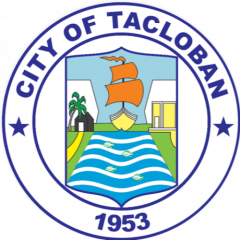TACLOBAN CITY, LEYTE — In the wake of the Department of Public Works and Highways (DPWH) imposing a 3-ton axle load limit on the iconic San Juanico Bridge due to structural concerns, the Tacloban City government has initiated a series of measures to mitigate the impact on transportation and commerce between Leyte and Samar.
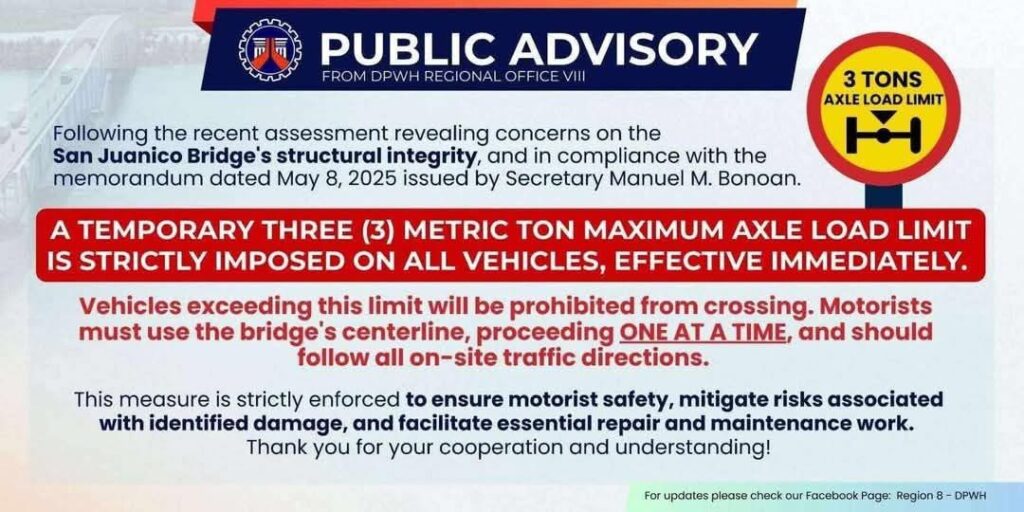
The San Juanico Bridge, a vital link in the Pan-Philippine Highway, has been restricted to light vehicles and pedestrians following the DPWH’s assessment that the bridge’s aging structure requires immediate attention. The Angel Lazaro and Associates International consultancy’s report revealed that the Demand-Capacity Ratio (DCR) of the bridge has reached 2.18 — significantly exceeding the normal standard of 1.0 or below. This figure indicates a critically overstressed structure. The reinforced concrete slab, which has not been replaced since the bridge’s inauguration in 1969, has retained only 25–30% of its original strength.
Further structural vulnerabilities identified include bending, shear, and axial load failures — all of which pose serious safety hazards if not addressed immediately.
In an emergency meeting with the Regional Disaster Risk Reduction and Management Council (RDRRMC), DPWH officials disclosed that the complete rehabilitation of the bridge could take anywhere from 1 to 2 years of continuous repair work. In the interim, a live load restriction of 3 tons has been imposed as a short-term solution, allowing Naga169 only light vehicles and pedestrian traffic to use the bridge.
City Government Joins Coordinated Response
On May 16, 2025, representatives from the Tacloban City Government, led by City Planning and Development Coordinator Janis Claire Canta, on behalf of City Mayor Alfred Romualdez, participated in a high-level meeting at the DPWH Regional Office VIII. The meeting brought together key regional stakeholders to finalize vehicle restrictions and coordinate emergency transport solutions.
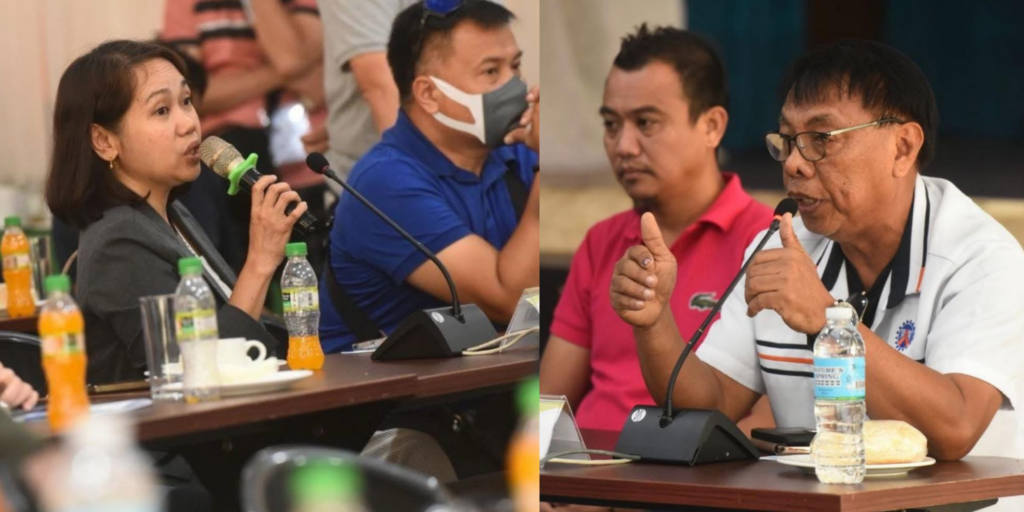
Tacloban officials emphasized the city’s vital role as a regional supply and logistics hub and committed to providing direct support through deployment of portalets for truck drivers and rerouted passengers, establishment of a TOMECO checkpoint at San Juanico Junction (Orly’s Area), and designation of a waiting area for heavy trucks along the Bypass Road (behind CRS) to prevent congestion near the bridge.
In the same day, the City also actively contributed to the Regional Disaster Risk Reduction Management Council (RDRRMC) Emergency Meeting, where strategies for long-term mitigation—including exploring alternative ports, barge services, and regional logistics routes—were discussed.
City Government Responds with Immediate Action
In response to the sudden restrictions, the City Government of Tacloban has taken proactive steps to manage the flow of people and goods, reduce commuter inconvenience, and prevent public safety risks.
The Traffic Operations, Management, Enforcement and Control Office (TOMECO), in coordination with the Philippine National Police (PNP), has played a central role in enforcing the new axle load restrictions. A checkpoint has been established near the San Juanico Bridge where TOMECO and PNP personnel inspect vehicles and ensure compliance. Trucks and buses exceeding the weight limit are being turned around and directed back to their origin points or rerouted to the Tacloban New Bus Terminal.
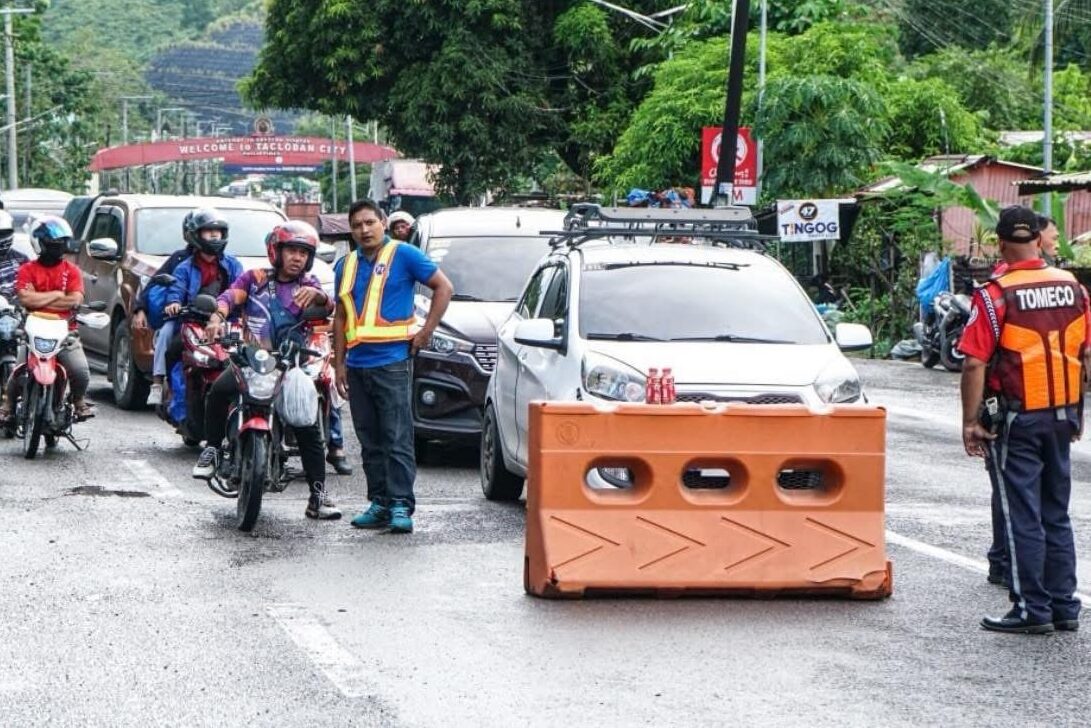
To prevent traffic buildup and ensure road safety, “No Parking” zones have been strictly enforced along the highway leading to the bridge. In addition, traffic personnel have been stationed at San Juanico Junction (Orly’s Area) to direct compliant vehicles and redirect heavier ones to a designated waiting area on the Bypass Road, behind CRS. As of the latest reports, both the Maharlika Highway and Bypass Road remain clear, with traffic flowing smoothly thanks to the swift action of TOMECO.
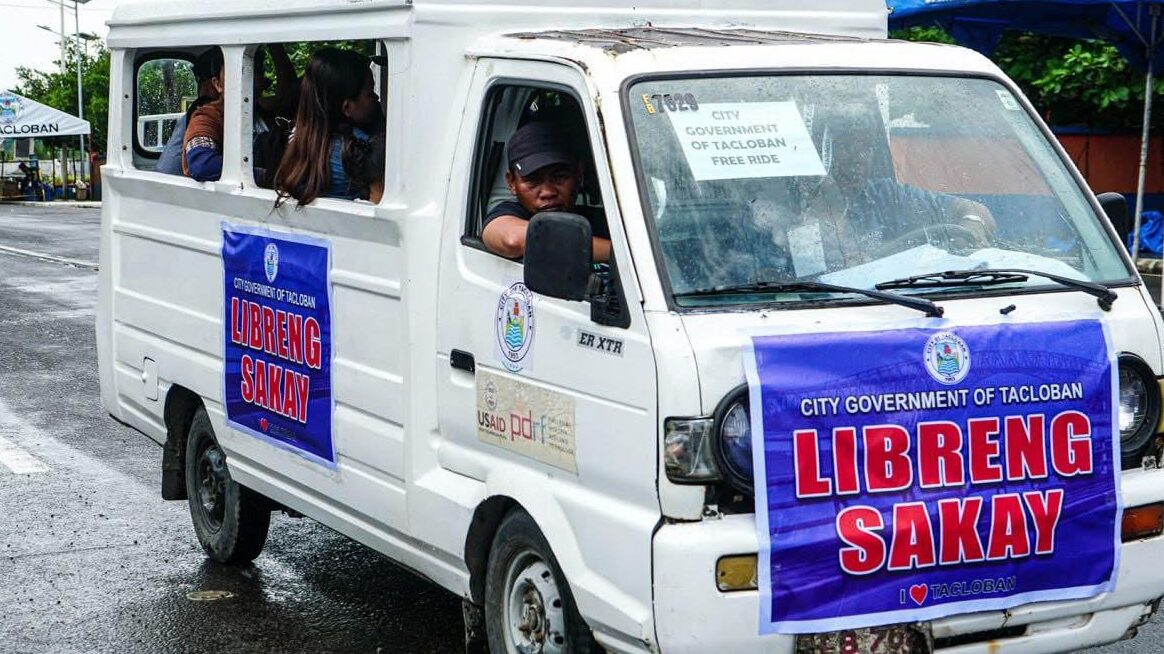
To assist commuters affected by the restriction, the Tacloban City Government has launched a “Libreng Sakay” (Free Ride) program. Three city-owned multicabs are now operating to ferry passengers across the affected area. These free rides operate between the San Juanico vicinity and the Tacloban New Bus Terminal, providing crucial mobility support for residents who depend on public transport.
This initiative is in collaboration with the DPWH Region 8 and Tingog Partylist, who had earlier deployed additional transport support. The Office of Civil Defense (OCD) Region 8 has emphasized that the bridge is now open only to light vehicles, with tricycles and pedestrians also prohibited for safety reasons.
Amandayehan Port as Short-Term Redress
In response to the vehicle restriction on San Juanico Bridge, an inter-agency team led by the Office of Civil Defense, Philippine Ports Authority, MARINA, and the Philippine Coast Guard launched a test voyage of the LCT Aldain Dowey vessel.
The vessel departed from Tacloban Seaport and successfully docked at Amandayehan Port in Basey, Samar after a 30-minute trip. The voyage demonstrated the viability of alternative maritime transport between Leyte and Samar islands.
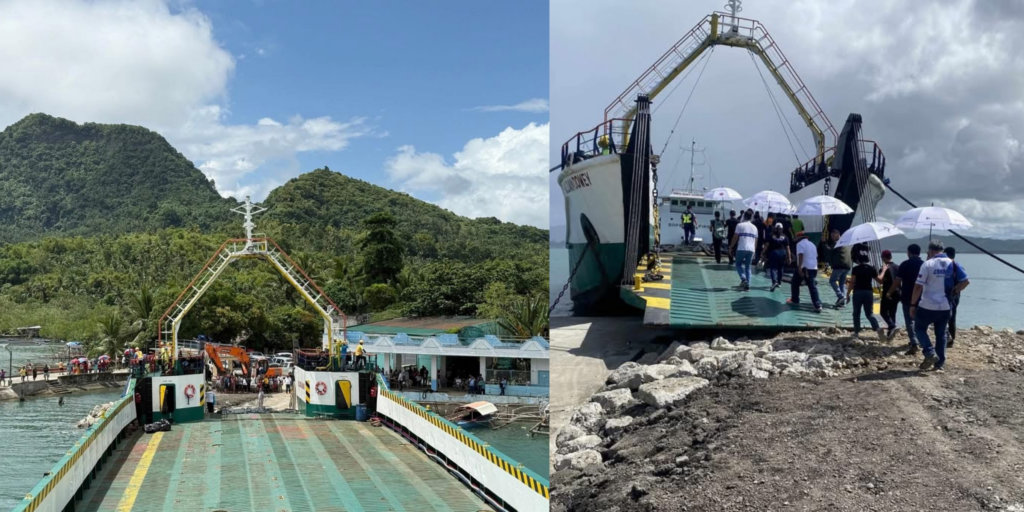
Attending the trial were representatives from Tacloban LGU, Basey LGU, DPWH, NEDA, DepDev, Tingog Partylist, and the Philippine Chamber of Commerce and Industry (PCCI).
This trial aims to support the transportation of goods and passengers during the rehabilitation period and lays the groundwork for regular barge operations if needed.
Long-Term Outlook: Second San Juanico Bridge in Planning
Recognizing the need for a sustainable solution, the Department of Public Works and Highways, with support from the Japan International Cooperation Agency (JICA), is advancing plans for the construction of a second San Juanico Bridge.
In a significant development, DPWH Secretary Manuel Bonoan announced in a Malacañang press briefing that a second San Juanico Bridge is already in the pipeline. Funded by the Government of Japan, the upcoming bridge will span approximately 2,600 meters—longer than the existing 2,164-meter structure.
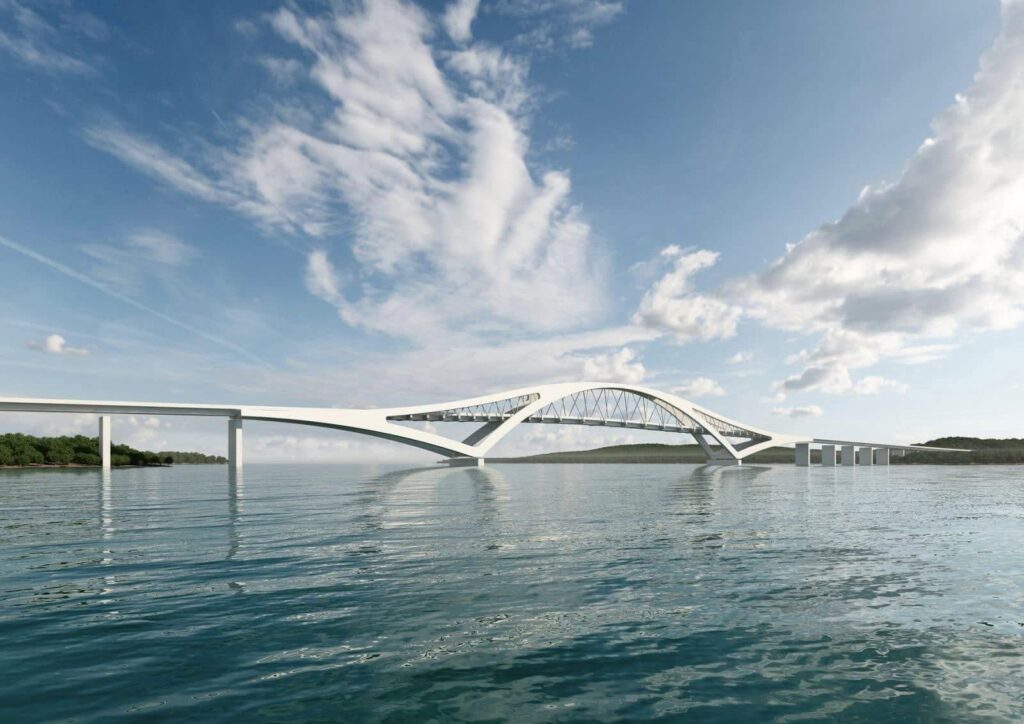
The detailed engineering design is set for completion by 2026, with construction expected to begin shortly thereafter. The total project cost will be finalized after the engineering phase.
Meanwhile, retrofitting of the current bridge is ongoing, aimed at increasing its load capacity to 10 tons by Q4 2025, allowing most commercial vehicles except ultra-heavy cargo.
